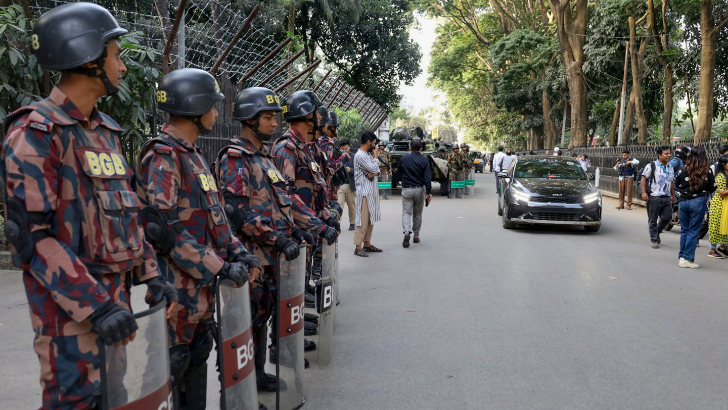Vietnam evacuates over 6 lakh people as typhoon Kajiki nears landfall
The typhoon started as a weak tropical depression on 22 Aug but grew into a powerful storm in less than two days, matching last year's Typhoon Yagi as one of the region's fastest-growing.
PTI
-
Photo: X
Hanoi, 25 August
Vietnam has evacuated hundreds of thousands of people and closed schools
and airports as it braces for Typhoon Kajiki, its strongest storm of the year
so far.
Forecasters said the typhoon had winds of up to 166 kilometres per hour
at 10 am Monday but is expected to weaken slightly before making landfall
between central Vietnam's Thanh Hoa and Ha Tinh provinces later in the
afternoon.
The typhoon started as a weak tropical depression on 22 Aug but grew
into a powerful storm in less than two days, matching last year's Typhoon Yagi
as one of the region's fastest-growing, according to state media. Its rapid
strengthening forced Vietnamese authorities to rush emergency measures as
strong winds and heavy rain hit the region.
Last year, Typhoon Yagi killed about 300 people and caused USD 3.3
billion in damage.
Kajiki has already caused devastation in China, with strong winds and heavy rain whipping Hainan Island and nearby parts of Guangdong province on
Sunday. About 20,000 people were evacuated from high-risk areas, China's
official Xinhua News Agency reported.
One man in Nghe An province died Friday after being electrocuted while
trying to secure his roof ahead of the storm, state media reported.
The storm is expected to move inland into Laos and northern Thailand.
Vietnamese state media reported plans to evacuate nearly 6,00,000 people
in the provinces of Thanh Hoa, Quang Tri, Hue and Danang, where more than
152,000 homes are in high-risk areas.
The government said over 16,500 soldiers and 1,07,000 paramilitary
personnel have been deployed to assist with evacuations and remain on standby
for search and rescue.
Vietnam halted flights at two airports in Thanh Hoa and Quang Binh
provinces on Monday, the Civil Aviation Authority of Vietnam said while dozens
of flights have been cancelled.
Scientists published a study last year warning that seas warmed by
climate change will result in Southeast Asia's cyclones forming closer to land,
strengthening faster and lasting longer, raising risks for cities.
“It's frightening to see our projections from just last year already
materialising,” said Benjamin P. Horton, Dean of the School of the Environment
and Chair Professor of Earth Science at City University of Hong Kong.
He said that the speed at which these changes were unfolding was a
“clear signal” that the climate crisis is moving faster than expected. “We are
no longer predicting the future — we are living it,” he
said.
Leave a Reply
Your email address will not be published. Required fields are marked *








.png)


.png)

.png)
.png)
.png)
.png)



